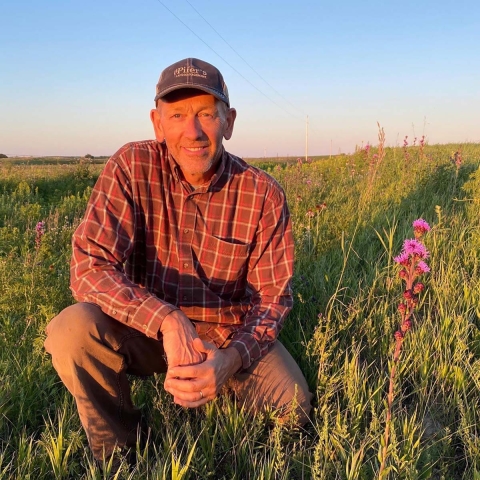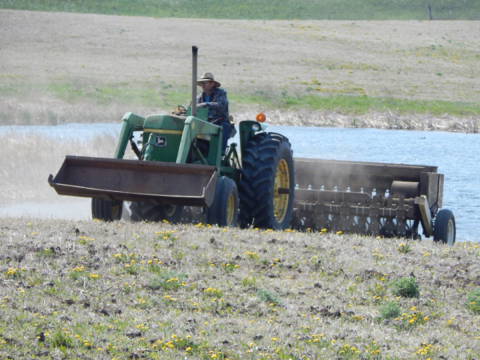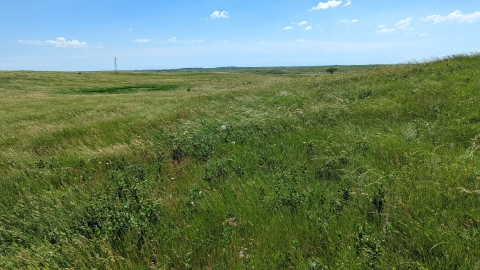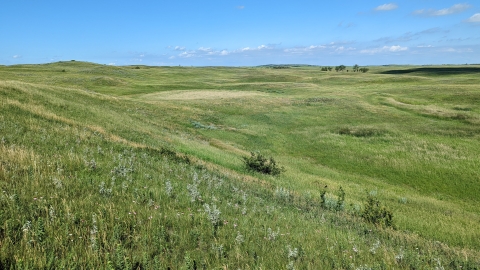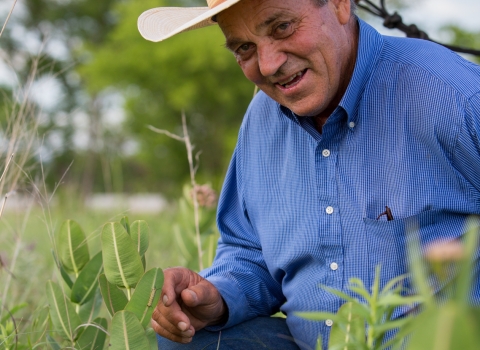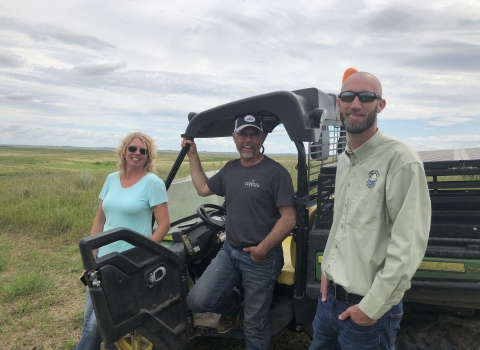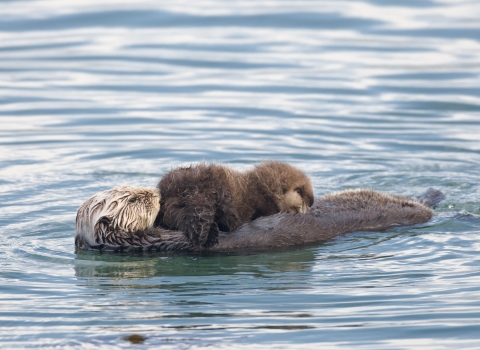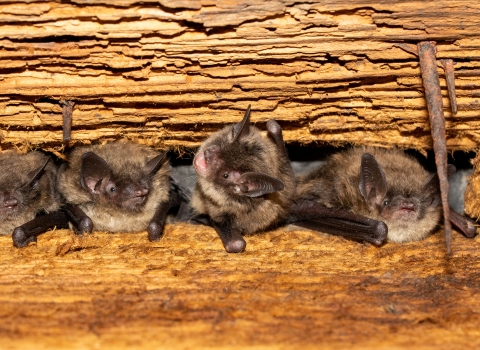Born and raised in North Dakota, Craig Larson considers himself a lifelong outdoorsman. He describes his hometown of Valley City, ND, as a great place to be an outdoorsy person. “I compare my early years to Huckleberry Finn, that’s the kind of childhood I had. I was always camping, hunting, and fishing with friends on the Sheyenne River which ran through Valley City. Through these experiences I developed an appreciation for nature and the outdoors early in life.”
Craig went into the family business of banking and has been in banking for 35 years. He currently serves as the executive director of the bank. “Now, I’m a banker by day, farmhand by weekend,” Craig says. “I stayed connected to the land even as a banker. The bank was founded in a small North Dakota town and agriculture continues to be one of our major focuses. Agriculture is a very important industry and is critical to the economic health of North Dakota, especially in the small towns that form the backbone of the state.”
Craig stayed connected to the outdoors community and eventually got involved in conservation. Now, Craig owns several plots of land across the North Dakota prairie. He purchased his first piece of land over 15 years ago. “At the time, it was a mix of native grass and cultivated acres, which is typical in this part of the state. Since then, I’ve restored most of the marginally productive, erosion-prone cultivated land, with the help of partners, and particularly with the U.S. Fish and Wildlife Service Partners for Fish and Wildlife Program.” Craig leases his properties to local ranchers, ensuring that they use rotational grazing and other best management practices on his land.
“My hope is to restore the prairie and manage the land to be highly productive grazing lands, incorporating grazing and fire, to help biodiversity.” Through these efforts, Craig has worked with several partners, which he says have been critical to his conservation efforts. “I appreciate the support from partners, both technical and financial.” Craig, who considers himself a “lifelong learner,” says his work with partners has furthered his education. As he works alongside partners like the Service, Craig has been able to learn from biologists, land managers, and even engineers to improve the health and productivity of his land.
"Partnerships are absolutely the key to conservation success on private lands,” says Scott McLeod, the Service’s Partners for Fish and Wildlife coordinator in North Dakota. “Yes, our program provides landowners with financial and technical assistance to help them achieve their goals. However, the real key to success are the strong personal relationships that are developed with private landowners like Craig. Those relationships are built on mutual trust and respect, and over time we work together to find solutions that are mutually beneficial to the landowner and Service. Working together, we know that we can both be successful."
The Service remains one of Craig’s primary partners, so it is no surprise that when Service staff were surveying for Dakota skippers on the land next to his, he was eager to get involved. “I’ve always been interested in the various plants and animals that live on this landscape, so when they were trying to get baseline numbers for the skippers, I was happy to host them onto my land to see if we had skippers there, too – and we did.”
For many landowners, finding an endangered or threatened species on their working lands can feel daunting or inconvenient – efforts must be made to protect the species from harm, even on a working ranch – but Craig was pleased to discover the threatened butterfly on his property. “When I heard this butterfly needs high-quality prairie, it gave me a sense of pride in my land. I would love to think that, through my work, if I’m maintaining and improving my native prairie, that I’m creating habitat for not just cattle, but for many other important species. This includes insects that provide valuable services by pollinating both wild and agricultural plant communities.”
“It’s important to understand that as landowners we can focus on both biodiversity and keeping our ranches as working lands,” Craig said. “All of these things fit together – biodiversity, working lands, healthy landscapes, and species conservation. It’s not an either-or – it's all of the above. As thoughtful, conservation-minded ranchers say, what’s good for the herd is good for the bird.”
Craig believes that a healthy prairie is a product of active management, which includes grazing and fire. For Craig, it also means good water filtration, carbon-rich soil, high plant diversity, and native plant and wildlife populations. And he says that a healthy prairie is a productive prairie. “More diverse landscapes are more productive. I’ve seen that land that previously could support, say 50 cow/calf pairs, now can graze 60-70 pairs while still leaving plenty of grass to support regrowth for the next growing season. Ranching is a tough business to be in and increasing your herd without buying additional land can make a positive difference on a rancher’s financial situation.”
Jerry Reinisch, fish and wildlife biologist with the Service, says he has seen similar shifts in perspective: “Even the older generation of landowners, many of whom are set in their ways, have changed their views once they see that the financial risks aren’t as great as they thought – and, in fact, there is financial benefit.”
Craig also shares his thoughts about carbon storage. “Some agricultural practices are reducing the amount of carbon stored in the soil – but carbon in our soil means more productive soil. If we want productive soils, we need carbon. It’s a win-win.”
“I try to be a good landowner and a good neighbor,” Craig says. “I work with a number of grazing partners, and across them all, there is a range of openness to sustainable grazing practices. My goal is to help my partners understand the values, benefits, and risks associated with different approaches to land management. It is each landowner’s prerogative what they do on their land. On my land, I ensure that these practices are in place.”
Craig has been recognized for his efforts within his community by multiple organizations, including the North Dakota Natural Resources Trust and Ducks Unlimited. Through his work, he continues to spread awareness of the benefits to regenerative grazing and sustainable land management – while being a good steward to the prairie and its wildlife that have thrived under his care.
Just as with conservation, this story was a product of collaboration with our partners and colleagues across the country. Written by Christina Stone in collaboration with Chad Klindtworth, Scott McLeod, Katie Nuessly, John Carlson, Luke Toso, Jerry Reinisch, Laura Jenkins, Matt Trott, and - with special thanks - Craig Larson.

